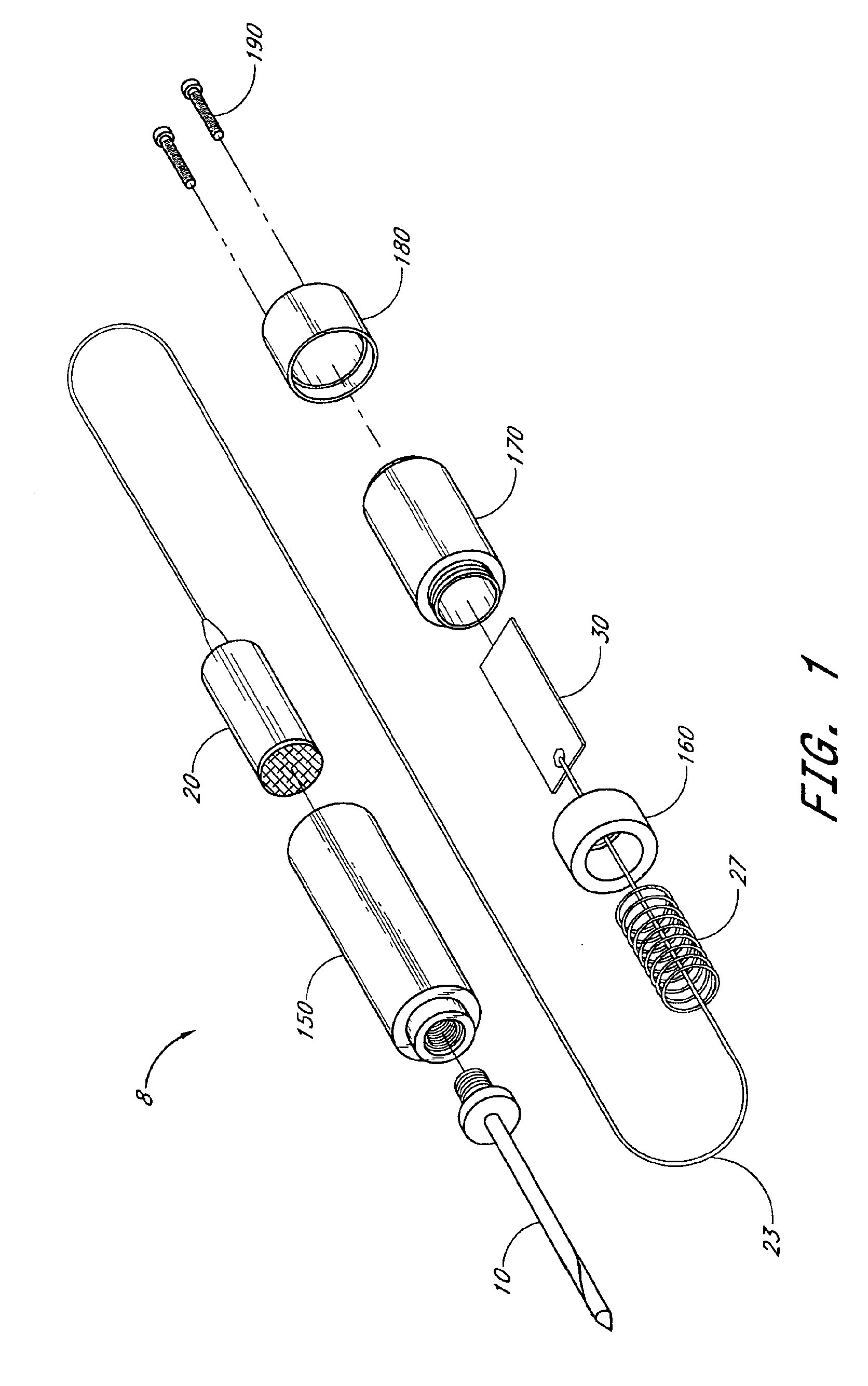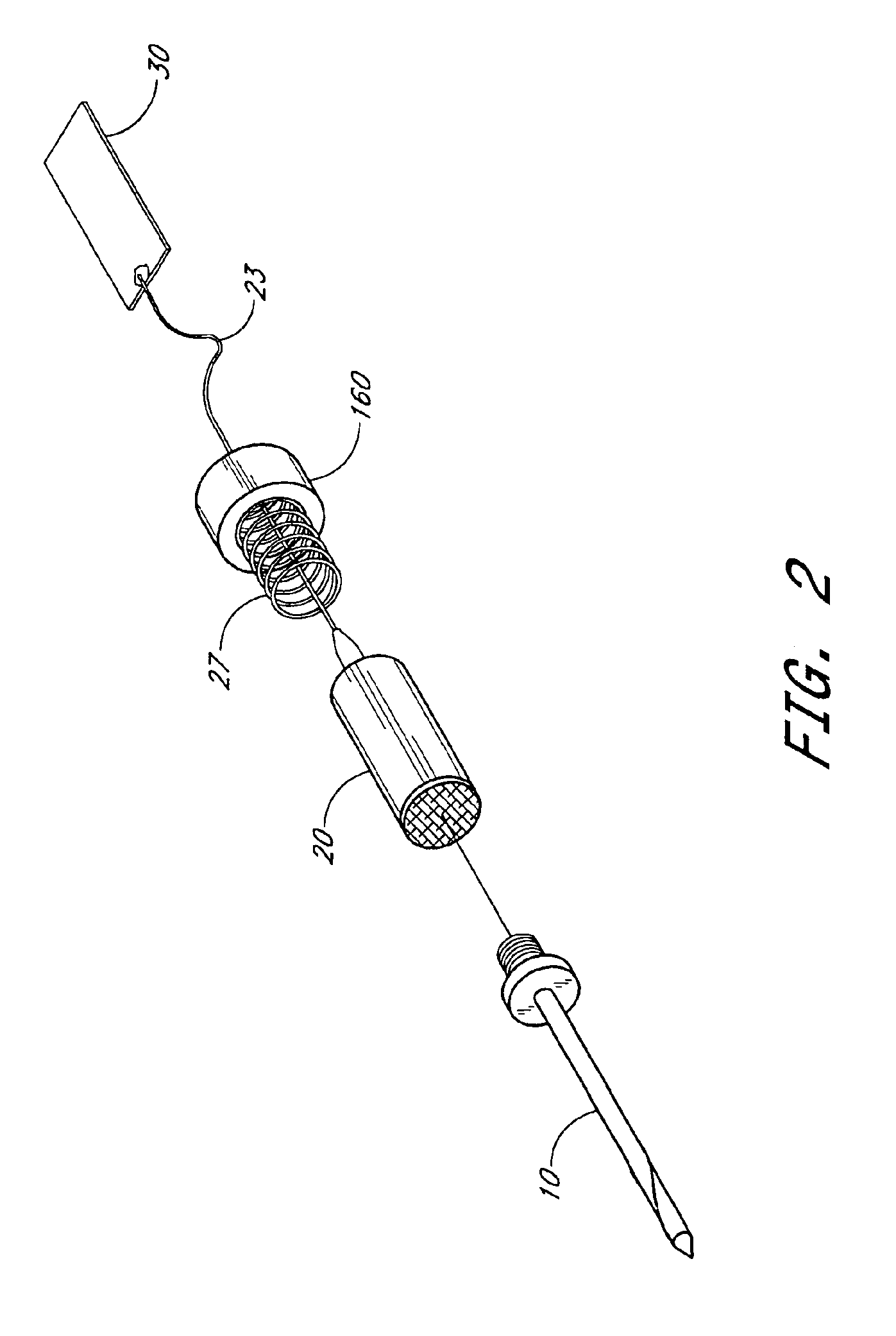Detection of movement of termites in wood by acoustic emission techniques
a technology of acoustic emission and detection of movement, applied in the direction of vibration measurement in solids, generator/motor, instruments, etc., can solve the problems of damage to wooden objects, damage to real property and natural resources, and damage caused by formosa subterranean termites alone exceeds one billion dollars annually, so as to improve detection reliability, reduce damage to objects, and improve sensitivity and access
- Summary
- Abstract
- Description
- Claims
- Application Information
AI Technical Summary
Benefits of technology
Problems solved by technology
Method used
Image
Examples
Embodiment Construction
[0052]The following description and examples illustrate in detail preferred embodiments of the detector system and method disclosed in the context of use to detect termites. The principles of the present invention, however, are not limited to the detection of termites. It will be understood by those of skill in the art in view of the present disclosure that the detector described may be applied to detect other types of wood-boring or wood-feeding creatures. One skilled in the art may also find additional applications for the devices and systems disclosed herein. Thus, the illustration and description of the detector and detection method in connection with termites are merely exemplary of one possible application of the detector and detection system.
[0053]The description below includes by way of specific example many specific components, dimensions and materials. However, it will be apparent to those knowledgeable in the art that other components, dimensions and materials may be used...
PUM
| Property | Measurement | Unit |
|---|---|---|
| opening angle | aaaaa | aaaaa |
| length | aaaaa | aaaaa |
| diameter | aaaaa | aaaaa |
Abstract
Description
Claims
Application Information
 Login to View More
Login to View More - R&D
- Intellectual Property
- Life Sciences
- Materials
- Tech Scout
- Unparalleled Data Quality
- Higher Quality Content
- 60% Fewer Hallucinations
Browse by: Latest US Patents, China's latest patents, Technical Efficacy Thesaurus, Application Domain, Technology Topic, Popular Technical Reports.
© 2025 PatSnap. All rights reserved.Legal|Privacy policy|Modern Slavery Act Transparency Statement|Sitemap|About US| Contact US: help@patsnap.com



